In order to achieve success in gardening, one must be well-versed in both the art and science of gardening, as well as aware of the surrounding environment. Those who reside in USDA Hardiness Zone 9, which is characterized by moderate winters and lengthy, warm growing seasons, have a considerable number of options to cultivate a vegetable garden that is successful. In order to assist gardeners in Zone 9 in making the most of their specific climate, this article offers individualized recommendations on planting schedules, vegetable crops calender that are ideal for the region, and vital suggestions for increasing productivity.
Learn the special requirements of your region, regardless of whether you are an experienced gardener or just beginning out, and you will be able to cultivate veggies that are both healthy and abundant throughout the entire year. Let’s dive into zone 9 vegetable planting guide.
Zone 9 Gardening Planner: What to Plant and When
1. When to Start Planting Vegetables in Zone 9a and 9b: A Month-by-Month Timeline
There are many different places that are included in Zone 9 in the United States. Some of these regions include sections of California (such as San Jose and Sacramento), Texas (such as Houston and Austin), Florida (such as Tampa and Orlando), and Arizona (such as Phoenix and Tucson). There are significant disparities between Zone 9a (which includes colder microclimates like Sacramento) and Zone 9b (which includes warmer locations like Phoenix), despite the fact that these regions have mild winters and hot summers at the same time. Maintaining a successful planting schedule throughout the year requires an understanding of these variances.
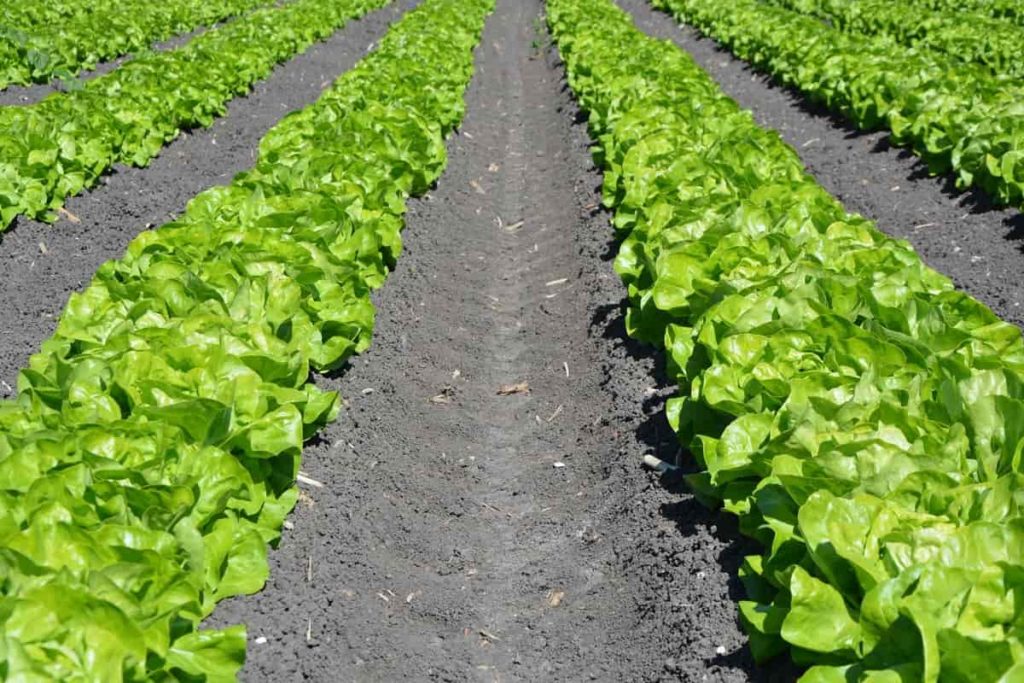
This is a planting schedule that spans a year and is tailored specifically for Zones 9a and 9b for planting:
| Month | Cool-Season Crops (9a/9b) | Warm-Season Crops (9a/9b) | Regional Notes | Frost Risk? (9a/9b) | Watering Needs (9a/9b) |
|---|---|---|---|---|---|
| January | Kale, Spinach, Peas (All Zones) | Start tomato seeds indoors (9a/9b) | Protect young plants from frost in 9a; plant freely in 9b. | Rare (9a), None (9b) | Moderate in 9a; Light in 9b. |
| February | Broccoli, Cauliflower (All Zones) | Transplant tomatoes outdoors (9a/9b) | Watch for late frosts in 9a; direct sow in 9b. | Minimal (9a), None (9b) | Increase during dry spells in 9b. |
| March | Arugula, Mustard Greens (All Zones) | Peppers, Eggplants (All Zones) | Mulch heavily in desert areas like Phoenix. | None (Both Zones) | Heavy during heatwaves in 9b. |
| April | N/A | Beans, Squash (All Zones) | Use shade cloths in inland areas like Houston. | None (Both Zones) | Daily watering recommended in 9b. |
| May | N/A | Cucumbers, Sweet Corn (All Zones) | Loosen soil deeply before planting in sandy areas like Tampa. | None (Both Zones) | Consistent watering in both zones. |
| June | N/A | Okra, Melons (All Zones) | Add organic mulch to retain moisture in Phoenix. | None (Both Zones) | Twice daily in extreme heat (9b). |
| July | N/A | Pumpkins, Zucchini (All Zones) | Mulch heavily to prevent soil drying in desert areas. | None (Both Zones) | Morning and evening watering in 9b. |
| August | N/A | Fall tomatoes, Peppers (All Zones) | Start cool-season crops indoors in 9a. | None (Both Zones) | Reduce watering as temperatures drop. |
| September | Lettuce, Spinach, Kale (All Zones) | N/A | Prepare beds for fall planting in both zones. | Low (9a), None (9b) | Light watering in 9b. |
| October | Carrots, Radishes, Beets (All Zones) | N/A | Ideal for fall planting in both 9a and 9b. | Low (9a), None (9b) | Moderate in 9a; Light in 9b. |
| November | Swiss Chard, Collards (All Zones) | N/A | Mulch to protect roots in cooler 9a areas. | Rare (9a), None (9b) | Water sparingly in 9b. |
| December | Broccoli, Cauliflower (All Zones) | N/A | Cover plants during frost-prone nights in 9a. | Occasional (9a), None (9b) | Light watering in both zones. |
2. Best Cool-Season Vegetables for Zone 9 Gardens: How to Grow Them Successfully
The mild winters of Zone 9 are ideal for the cultivation of cool-season vegetables; however, the strategy taken to cultivate these crops varies slightly between coastal places (such as the San Francisco Bay Area) and warmer inland regions (including Phoenix and Houston). In coastal Zone 9b, for instance, leafy greens such as spinach and kale grow especially well because to the continuous rainfall and warmer temperatures. On the other hand, inland gardeners in Zone 9a may need to use row covers to protect their crops from the occasional frost.
The top cool-season vegetables for Zone 9 are listed in this table along with helpful advice for growing them successfully in both 9a and 9b:
| Vegetable | Planting Time (9a/9b) | Spacing (inches) | Days to Harvest | Regional Notes | Pest Control Tips | Ideal Soil pH |
|---|---|---|---|---|---|---|
| Kale | September – November (All Zones) | 18-24 | 50-60 | Thrives in coastal 9b; use row covers in 9a. | Use row covers to protect from aphids. | 6.0-7.5 |
| Spinach | October – December (All Zones) | 6-12 | 40-50 | Grows quickly in 9b; protect from frost in 9a. | Spray neem oil for leaf miners. | 6.0-7.0 |
| Carrots | September – February (All Zones) | 2-3 | 60-75 | Loosen sandy soil in 9b; add compost in 9a. | Mulch to prevent carrot fly infestation. | 5.5-7.0 |
| Radishes | October – March (All Zones) | 1-2 | 20-30 | Grows fast in 9b; thin seedlings in 9a. | Thin seedlings to avoid overcrowding. | 6.0-7.0 |
| Broccoli | August – November (All Zones) | 18-24 | 70-90 | Mulch heavily in 9a; plant freely in 9b. | Handpick cabbage worms regularly. | 6.0-7.5 |
| Swiss Chard | September – January (All Zones) | 12-18 | 50-60 | Grows well in 9b; cover in 9a during frost. | Rotate crops annually to prevent pests. | 6.0-7.5 |
| Arugula | October – February (All Zones) | 6-12 | 30-40 | Grows quickly in 9b; use shade cloth in summer. | Water consistently to prevent bitterness. | 6.0-6.8 |
3. Top Heat-Tolerant Vegetables for Zone 9 Summers (That Won’t Bolt!)
Particularly in inland regions like Phoenix and Houston, where temperatures frequently surpass 100°F, Zone 9 summers are intense. Summer gardening requires heat-tolerant veggies, but even these crops need to be properly cared for. Plants may withstand the extreme heat by employing strategies like watering frequently, mulching extensively, and using shade cloths.
Here is a list of veggies that can withstand high temperatures and advice on how to cultivate them in Zone 9:
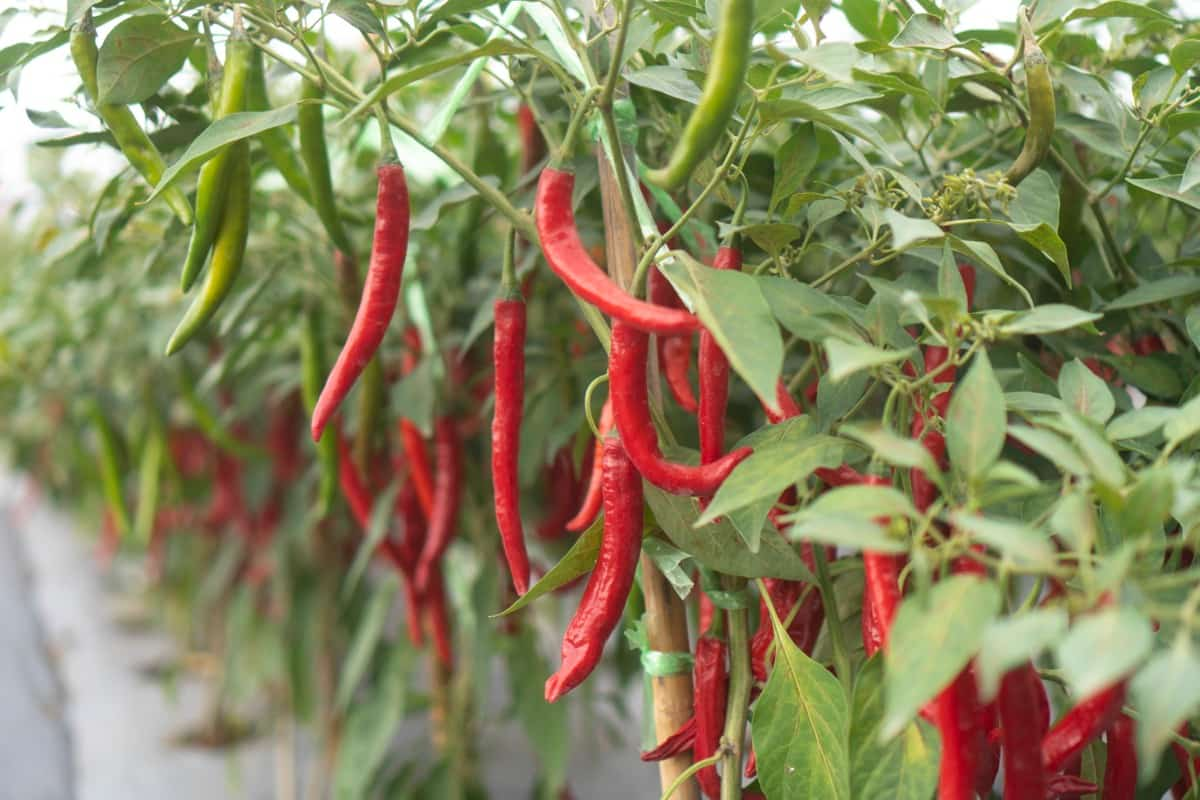
| Vegetable | Planting Time (9a/9b) | Heat Tolerance | Watering Needs | Shade Requirements | Common Issues | Harvesting Tips |
|---|---|---|---|---|---|---|
| Peppers | March – May (All Zones) | High | Moderate | Partial shade optional | Blossom drop in extreme heat | Harvest when fruits are firm and glossy. |
| Okra | April – June (All Zones) | Very High | Light | Full sun preferred | Aphid infestations | Pick pods when they’re 2-3 inches long. |
| Melons | April – May (All Zones) | High | Heavy | Full sun required | Powdery mildew | Harvest when fruits slip off the vine. |
| Eggplants | March – May (All Zones) | High | Moderate | Partial shade optional | Flea beetles | Cut fruits when skin is glossy. |
| Sweet Potatoes | April – June (All Zones) | Very High | Light | Full sun required | Root rot in soggy soil | Dig up tubers after vines die back. |
| Zucchini | March – May (All Zones) | Moderate | Heavy | Shade cloth recommended | Squash bugs | Harvest young fruits for best flavor. |
| Cowpeas | April – July (All Zones) | Very High | Light | Full sun preferred | Birds eating pods | Pick pods when plump and green. |
4. How to Extend the Growing Season for Leafy Greens in Hot Zone 9 Climates
It is common practice to consider leafy greens such as lettuce, spinach, and arugula to be cool-season crops; but, with proper preparation, it is possible to cultivate these plants throughout the entire year in Zone 9. As a result of the milder summers that are experienced in coastal locations such as San Francisco and San Jose (Zone 9b), it is easier to cultivate leafy greens even during the warmer months. On the other hand, in order to avoid bolting and bitterness, inland places such as Phoenix and Houston (Zone 9a/9b) require tactics like as shade cloths, heat-tolerant varietals, and consistent watering.
In Zone 9, the following is a guide that can help you lengthen the growth season for leafy greens:
| Green | Shade Cloth % (9a/9b) | Mulching Type | Watering Frequency | Heat-Tolerant Varieties | Bolting Prevention Tips | Harvest Window |
|---|---|---|---|---|---|---|
| Lettuce | 40-50% (All Zones) | Straw or Wood Chips | Daily | Buttercrunch, Romaine | Use shade cloth during summer; water deeply. | 40-50 days. |
| Spinach | 30-40% (All Zones) | Compost or Grass Clippings | Twice daily | Bloomsdale, Tyee | Spray neem oil for leaf miners. | 40-50 days. |
| Arugula | 30% (All Zones) | Shredded Leaves | Morning & Evening | Astro, Rocket | Thin seedlings to avoid overcrowding. | 30-40 days. |
| Kale | 20-30% (All Zones) | Pine Needles or Bark | Every other day | Lacinato, Red Russian | Prune lower leaves for airflow. | 50-60 days. |
| Swiss Chard | 20% (All Zones) | Grass Clippings | Daily | Bright Lights, Fordhook | Avoid overhead watering to reduce stress. | 50-60 days. |
| Mustard Greens | 30% (All Zones) | Straw or Compost | Twice daily | Mizuna, Osaka Purple | Rotate crops annually to prevent pests. | 40-50 days. |
| Collard Greens | 20-30% (All Zones) | Wood Chips or Bark | Every other day | Georgia Southern, Vates | Harvest frequently to encourage new growth. | 60-70 days. |
5. What Vegetables Can You Grow Year-Round in Zone 9a and 9b?
Because of the extended growing season and moderate winters in Zone 9, it is possible to cultivate certain vegetables throughout the entire year. There is a lower chance of frost in coastal places such as San Diego and Tampa (Zone 9b), which enables gardeners to sow cool-season crops such as kale and spinach even during the winter months. Although frost protection may be necessary during the later months in inland places such as Sacramento and Austin (Zone 9a), warm-season crops such as tomatoes and peppers thrive from spring through October.
The following is a list of vegetables that can be produced throughout the year in Zone 9, along with some helpful hints for their cultivation:
| Vegetable | Cool-Season Planting (9a/9b) | Warm-Season Planting (9a/9b) | Shade Requirements | Watering Needs | Common Challenges | Tips for Success |
|---|---|---|---|---|---|---|
| Kale | September – November (All Zones) | N/A | Partial shade | Moderate | Bolting in heat | Use shade cloth during summer. |
| Carrots | October – February (All Zones) | N/A | Full sun | Light | Split roots in heavy soil | Loosen soil deeply before planting. |
| Radishes | October – March (All Zones) | N/A | Full sun | Light | Pithiness in hot weather | Harvest promptly to avoid bitterness. |
| Swiss Chard | September – January (All Zones) | N/A | Partial shade | Moderate | Leaf miners | Spray neem oil regularly. |
| Tomatoes | N/A | February – April (All Zones) | Shade cloth recommended | Heavy | Blossom drop in extreme heat | Water consistently and mulch heavily. |
| Peppers | N/A | March – May (All Zones) | Full sun | Moderate | Sunscald on fruits | Use row covers during frost-prone nights. |
| Beans (Bush) | N/A | March – June (All Zones) | Full sun | Heavy | Powdery mildew | Rotate crops anuualy. |
6. Tips for Growing Tomatoes in Zone 9’s Warm Winters and Hot Summers
Gardeners in Zone 9 have a strong preference for tomatoes, but cultivating them successfully involves paying close attention to the geographical variances that exist. Coastal regions, such as San Jose and Tampa (Zone 9b), see summers that are gentler, whereas inland regions, such as Phoenix and Houston (Zone 9a/9b), are subject to excessive heat, which can result in problems such as blossom drop and sunscald. Gardeners should select heat-resistant species, maintain a constant watering schedule, and make use of mulch to retain moisture in order to maximize their chances of success.
Tomatoes can be effectively grown in Zone 9 according to the following table:
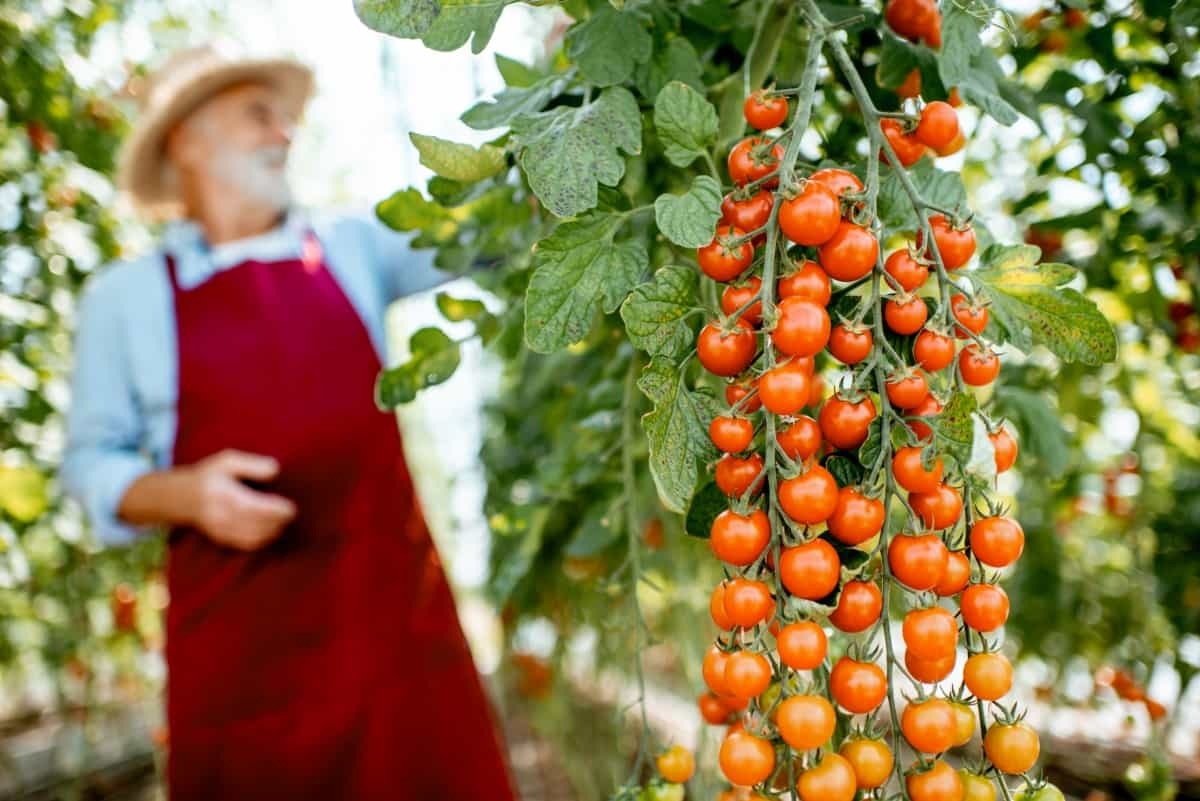
| Variety | Planting Time (9a/9b) | Heat Tolerance | Spacing (inches) | Watering Needs | Pest Control Tips | Harvest Window |
|---|---|---|---|---|---|---|
| Cherry Tomatoes | February – April (All Zones) | High | 24-36 | Heavy | Use row covers to protect from aphids. | 60-70 days. |
| Beefsteak Tomatoes | February – April (All Zones) | Moderate | 36-48 | Heavy | Handpick hornworms regularly. | 70-80 days. |
| Roma Tomatoes | February – April (All Zones) | Moderate | 24-36 | Moderate | Spray neem oil for whiteflies. | 75-85 days. |
| Early Girl | February – March (All Zones) | High | 24-36 | Heavy | Mulch to retain moisture. | 50-60 days. |
| Sungold | February – April (All Zones) | Very High | 24-36 | Heavy | Prune lower leaves for airflow. | 55-65 days. |
| Black Krim | February – April (All Zones) | Moderate | 24-36 | Moderate | Rotate crops annually. | 75-85 days. |
| San Marzano | February – April (All Zones) | Moderate | 24-36 | Moderate | Avoid overhead watering. | 80-90 days. |
7. Guide to Planting Peppers in Zone 9: From Sweet to Spicy Varieties
In the warm environment of Zone 9, peppers are able to flourish; nonetheless, their success is contingent on the appropriate care and considerations of the region. Coastal regions, such as San Diego and Orlando (Zone 9b), have temperatures that are more moderate, but inland regions, such as Phoenix and Houston (Zone 9a/9b), are subjected to elevated temperatures that can cause plants to become stressed. Peppers can be effectively grown by selecting kinds that can withstand high temperatures, ensuring that there is sufficient spacing between plants, and guarding them from pests.
The following is an in-depth guide to cultivating peppers in Zone 9:
| Variety | Planting Time (9a/9b) | Heat Level | Spacing (inches) | Days to Harvest | Companion Plants | Pest Control Tips |
|---|---|---|---|---|---|---|
| Bell Peppers | March – May (All Zones) | Sweet | 18-24 | 60-90 | Basil, Oregano | Use row covers to protect from aphids. |
| Jalapeños | March – May (All Zones) | Medium | 18-24 | 70-80 | Carrots, Onions | Spray neem oil for spider mites. |
| Habaneros | March – May (All Zones) | Very Hot | 18-24 | 80-90 | Marigolds, Nasturtiums | Handpick caterpillars regularly. |
| Poblano (Ancho) | March – May (All Zones) | Mild | 18-24 | 70-80 | Beans, Cilantro | Rotate crops annually to prevent pests. |
| Cayenne Peppers | March – May (All Zones) | Hot | 18-24 | 70-80 | Garlic, Chives | Mulch heavily to retain moisture. |
| Banana Peppers | March – May (All Zones) | Mild | 18-24 | 60-70 | Spinach, Lettuce | Avoid overhead watering to reduce stress. |
| Ghost Peppers | March – May (All Zones) | Extremely Hot | 24-36 | 90-100 | Mint, Thyme | Use shade cloth during extreme heat. |
8. How to Protect Your Vegetable Garden from Late Frosts in Zone 9a
Gardens in Zone 9a that are located in cooler microclimates, such as Sacramento (California), Austin (Texas), and certain portions of inland Florida, face a unique difficulty in the form of late frost warnings. Zone 9a is susceptible to experiencing periodic cold snaps as late as March or April, in contrast to Zone 9b, which only rarely receives frost. The protection of sensitive vegetables such as tomatoes, peppers, and leafy greens is absolutely necessary in order to prevent harm. Protecting plants from freezing temperatures can be accomplished by the utilization of techniques such as row covers, cloches, and frost blankets.
In Zone 9a, the following table is a recommendation that can assist you in safeguarding your vegetable garden from late frosts:
| Vegetable | Frost Tolerance | Protection Method | Ideal Covering | Watering Before Frost | Additional Tips | Recovery After Frost |
|---|---|---|---|---|---|---|
| Broccoli | High | Row covers | Frost blanket | Water deeply | Mulch heavily to retain soil warmth. | Trim damaged leaves; new growth resumes. |
| Lettuce | Moderate | Cloches | Plastic bottles with caps | Light watering | Use raised beds for better drainage. | Harvest promptly if frost hits. |
| Carrots | High | Mulch | Straw or leaves | Water lightly | Loosen soil before mulching. | Roots recover quickly; trim tops. |
| Spinach | Very High | Row covers | Frost blanket | Water deeply | Plant in clusters for shared warmth. | No action needed; spinach thrives. |
| Kale | Very High | No cover needed | N/A | Water moderately | Prune lower leaves for airflow. | New growth emerges after frost. |
| Peas | Moderate | Cloches | Plastic sheeting | Water lightly | Plant near taller crops for windbreaks. | Reseed if severely damaged. |
| Swiss Chard | High | Row covers | Frost blanket | Water moderately | Rotate crops annually to prevent pests. | Trim damaged leaves. |
9. Root Vegetables That Thrive in Zone 9’s Sandy Soil: Carrots, Beets, and More
Carrots, beets, and radishes are some of the root vegetables that thrive in the sandy soil of Zone 9, which is particularly suitable for cultivation in desert places such as Phoenix (Arizona) and certain areas of Central Florida. These crops require soil that is loose and has good drainage in order to establish roots that are straight and healthy. On the other hand, sandy soil frequently lacks nutrients, which is why it is essential to modify it with compost or organic waste in order to achieve success. There is a possibility that coastal regions, such as San Jose (California), have heavier soils, which necessitate more loosening prior to planting.
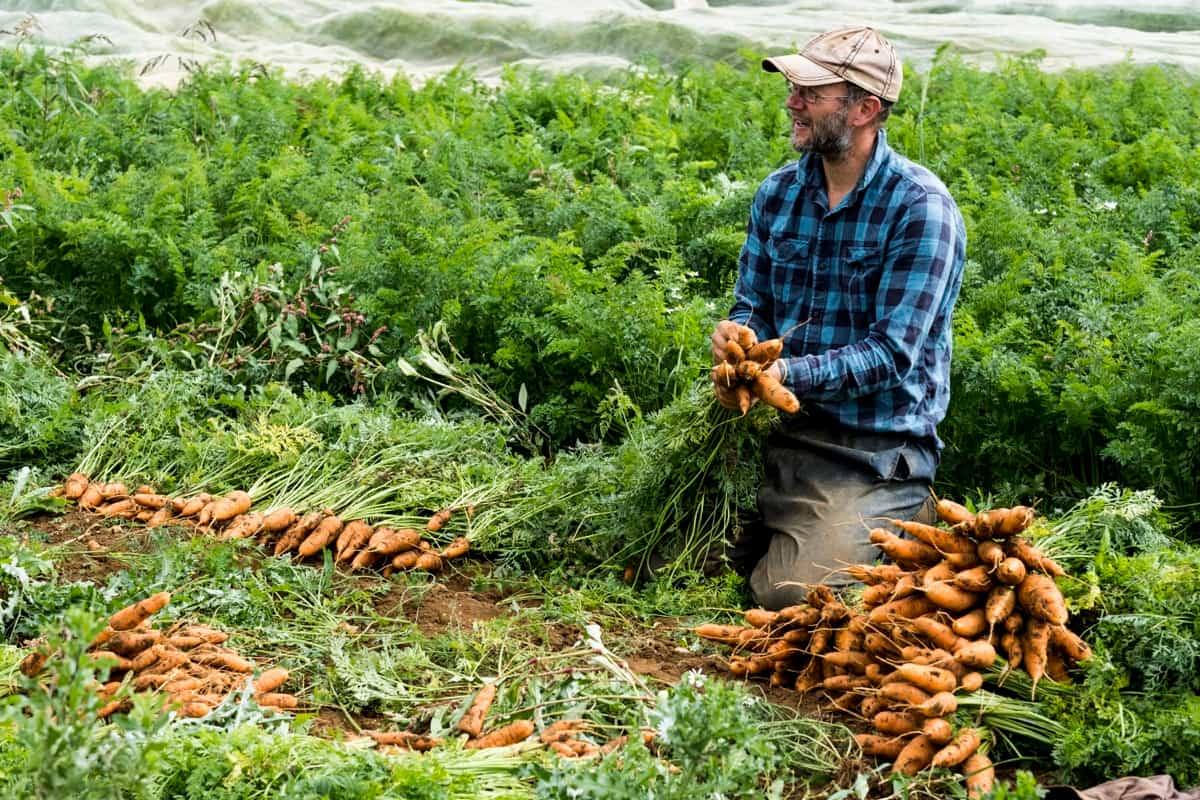
In the sandy soil of Zone 9, the following is a table that will help you effectively cultivate root vegetables:
| Vegetable | Planting Time (9a/9b) | Soil Prep Needs | Spacing (inches) | Days to Harvest | Pest Control Tips | Harvesting Tips |
|---|---|---|---|---|---|---|
| Carrots | October – February (All Zones) | Add compost; loosen soil | 2-3 | 60-75 | Mulch to prevent carrot fly. | Pull gently when roots are firm. |
| Beets | September – January (All Zones) | Add aged manure | 3-4 | 50-60 | Spray neem oil for aphids. | Harvest when roots are 1-2 inches wide. |
| Radishes | October – March (All Zones) | Loosen soil deeply | 1-2 | 20-30 | Thin seedlings to avoid crowding. | Pull promptly to avoid pithiness. |
| Turnips | September – November (All Zones) | Add lime to reduce acidity | 4-6 | 40-50 | Rotate crops annually. | Harvest when roots are 2-3 inches wide. |
| Parsnips | October – December (All Zones) | Remove stones; add compost | 3-4 | 100-120 | Use row covers for pests. | Leave in ground until after frost for sweetness. |
| Rutabagas | September – October (All Zones) | Add organic matter | 6-8 | 80-90 | Handpick caterpillars. | Harvest when roots are 3-4 inches wide. |
| Daikon Radish | October – February (All Zones) | Loosen soil deeply | 4-6 | 40-50 | Mulch heavily to retain moisture. | Pull when roots are crisp and white. |
10. Why Succession Planting Is Key to a Bountiful Harvest in Zone 9 Gardens
Because of its extended growing season and mild winters, Zone 9 is an ideal location for succession planting because of its favorable conditions. It is possible for gardeners to have continuous harvests throughout the year if they plant fast-growing crops like lettuce, radishes, and beans at intervals of a few weeks. The usage of this method is particularly advantageous in coastal regions like as San Diego (California) and Tampa (Florida), where the mild winters allow for longer growth seasons.
For anyone interested in undertaking succession planting in Zone 9, here is a guide:
| Crop | First Planting (9a/9b) | Second Planting (9a/9b) | Third Planting (9a/9b) | Spacing (inches) | Days Between Plantings | Tips for Success | Harvest Window |
|---|---|---|---|---|---|---|---|
| Lettuce | October (All Zones) | November (All Zones) | December (All Zones) | 6-12 | 2-3 weeks | Use shade cloth during summer. | 40-50 days. |
| Radishes | October (All Zones) | November (All Zones) | December (All Zones) | 1-2 | 2 weeks | Thin seedlings to prevent overcrowding. | 20-30 days. |
| Beans (Bush) | March (All Zones) | April (All Zones) | May (All Zones) | 3-4 | 3 weeks | Rotate crops annually to prevent disease. | 50-60 days. |
| Carrots | October (All Zones) | November (All Zones) | December (All Zones) | 2-3 | 3 weeks | Loosen soil deeply before planting. | 60-75 days. |
| Spinach | October (All Zones) | November (All Zones) | December (All Zones) | 6-12 | 2-3 weeks | Mulch to retain moisture. | 40-50 days. |
| Beets | September (All Zones) | October (All Zones) | November (All Zones) | 3-4 | 3 weeks | Add aged manure for nutrients. | 50-60 days. |
| Arugula | October (All Zones) | November (All Zones) | December (All Zones) | 6-12 | 2 weeks | Water consistently to prevent bitterness. | 30-40 days. |
11. Best Companion Plants for Vegetables in Zone 9: Boost Yields Naturally
Companion planting is an effective method in Zone 9, which is characterized by high temperatures and pests that can cause stress to vegetable gardens. Combining plants that are compatible not only increases yields but also naturally minimizes the number of pest problems that occur. An example of this would be marigolds planted close to tomatoes, which discourage nematodes, and basil, which improves the flavor of tomatoes and discourages aphids. Companion planting is beneficial for managing humidity in coastal places such as San Francisco (Zone 9b), but it is also utilized for combating heat stress in inland areas such as Phoenix (Zone 9b).
The following is a list of the finest companion plants for veggies that are suitable for Zone 9:
| Vegetable | Best Companion Plants | Benefits | Avoid Planting With | Spacing (inches) | Tips for Success |
|---|---|---|---|---|---|
| Tomatoes | Basil, Marigolds, Nasturtiums | Repels pests; improves flavor | Potatoes, Fennel | 24-36 | Interplant herbs for natural pest control. |
| Peppers | Carrots, Onions, Basil | Deters aphids; improves growth | Beans, Kale | 18-24 | Mulch heavily to retain moisture. |
| Broccoli | Dill, Chamomile, Celery | Attracts beneficial insects | Strawberries, Tomatoes | 18-24 | Rotate crops annually to prevent pests. |
| Carrots | Leeks, Onions, Sage | Repels carrot flies | Parsnips, Dill | 2-3 | Loosen soil deeply before planting. |
| Cucumbers | Radishes, Nasturtiums, Beans | Deters beetles; fixes nitrogen | Potatoes, Sage | 12-18 | Use trellises to save space. |
| Lettuce | Radishes, Chives, Strawberries | Provides shade; repels pests | Parsley, Cabbage | 6-12 | Plant in clusters for shared moisture. |
| Beans (Bush) | Corn, Cucumbers, Beets | Fixes nitrogen; supports climbing plants | Onions, Garlic | 3-4 | Rotate crops annually. |
12. How to Grow Healthy Cucumbers and Zucchini in Zone 9’s High Heat
Although cucumbers and zucchini are able to flourish in the warm environment of Zone 9, their success is contingent on their ability to effectively manage heat stress, particularly in inland regions such as Phoenix (Arizona) and Houston (Texas). Even though coastal areas, such as San Diego (California) and Tampa (Florida), get milder summers, it is still necessary to mulch and water plants on a daily basis. When it comes to cultivating cucumbers and zucchini, the most important factors are heat-resistant types, adequate spacing, and effective pest management.

For those interested in successfully cultivating cucumbers and zucchini in Zone 9, here is a table:
| Crop | Planting Time (9a/9b) | Heat Tolerance | Spacing (inches) | Watering Needs | Pest Control Tips | Harvesting Tips |
|---|---|---|---|---|---|---|
| Cucumbers | March – May (All Zones) | High | 12-18 | Heavy | Use row covers for beetles. | Harvest when fruits are firm and green. |
| Zucchini | March – May (All Zones) | Moderate | 24-36 | Heavy | Spray neem oil for aphids. | Pick young fruits for best flavor. |
| Lemon Cucumber | March – May (All Zones) | Very High | 12-18 | Heavy | Mulch heavily to retain moisture. | Harvest when fruits are lemon-sized. |
| Pattypan Squash | March – May (All Zones) | Moderate | 24-36 | Heavy | Handpick squash bugs regularly. | Harvest when fruits are small and tender. |
| Armenian Cucumber | March – May (All Zones) | High | 12-18 | Heavy | Use shade cloth during heat. | Harvest when fruits are 12-18 inches long. |
| Yellow Crookneck | March – May (All Zones) | Moderate | 24-36 | Heavy | Rotate crops annually. | Pick fruits promptly to encourage production. |
| Spineless Cactus | March – May (All Zones) | Very High | 12-18 | Light | Prune lower leaves for airflow. | Harvest pads when when they’re tender. |
13. Organic Pest Control Tips for Zone 9 Vegetable Gardens: Keep Pests at Bay
Pests are a prevalent problem in vegetable gardens located in Zone 9 because of the region’s warm environment, which provides the ideal circumstances for insects such as aphids, whiteflies, and caterpillars to thrive during the growing season. Organic pest management approaches, like as the application of neem oil, companion planting, and the introduction of beneficial insects, can assist gardeners in managing these difficulties without the need to resort to the use of environmentally hazardous pesticides. Maintaining good soil and rotating crops on an annual basis are crucial practices, particularly in arid places such as Phoenix (Arizona) and humid regions such as Houston (Texas). Proactive measures are essential because prevention is the most important factor.
This table provides a organic pest control for vegetable gardens located in Zone 9:
| Pest | Affected Plants | Signs of Infestation | Prevention Tips | Organic Treatment | Beneficial Insects | Additional Notes |
|---|---|---|---|---|---|---|
| Aphids | Tomatoes, Peppers, Kale | Curled leaves; sticky residue | Use row covers; prune infested leaves. | Spray neem oil or insecticidal soap. | Ladybugs, Lacewings | Avoid over-fertilizing with nitrogen. |
| Whiteflies | Cucumbers, Squash, Beans | Yellowing leaves; flying insects | Use reflective mulch; prune infested leaves. | Spray horticultural oil. | Parasitic Wasps | Inspect undersides of leaves regularly. |
| Caterpillars | Broccoli, Cabbage, Kale | Chewed leaves; frass | Handpick caterpillars daily. | Apply Bacillus thuringiensis (BT). | Birds, Trichogramma Wasps | Rotate crops annually to break life cycles. |
| Spider Mites | Peppers, Beans, Tomatoes | Fine webbing; yellow spots | Increase humidity; prune infested leaves. | Spray water or neem oil. | Predatory Mites | Avoid overhead watering to reduce stress. |
| Nematodes | Tomatoes, Peppers, Carrots | Stunted growth; root galls | Use marigolds as trap crops. | Solarize soil before planting. | N/A | Add organic matter to improve soil health. |
| Thrips | Lettuce, Onions, Beans | Silver streaks; distorted growth | Use reflective mulch; prune infested leaves. | Spray spinosad or neem oil. | Pirate Bugs | Monitor plants closely during dry spells. |
| Slugs/Snails | Lettuce, Spinach, Cabbage | Chewed leaves; slime trails | Use beer traps; handpick nightly. | Apply diatomaceous earth. | N/A | Water in the morning to reduce moisture. |
14. How to Prepare Your Soil for Spring Planting in Zone 9’s Unique Climate
When it comes to gardening in Zone 9, where sandy soils are prevalent in arid regions such as Phoenix (Arizona) and heavy clay soils are prominent in certain sections of Texas and Florida, proper soil preparation is absolutely necessary for achieving success. There is a possibility that loamy soils occur in coastal locations such as San Jose (California), which require less treatment. In order to improve fertility, drainage, and moisture retention, it is vital to incorporate organic matter such as compost or aged manure into the soil. This is true regardless of the kind of soil.
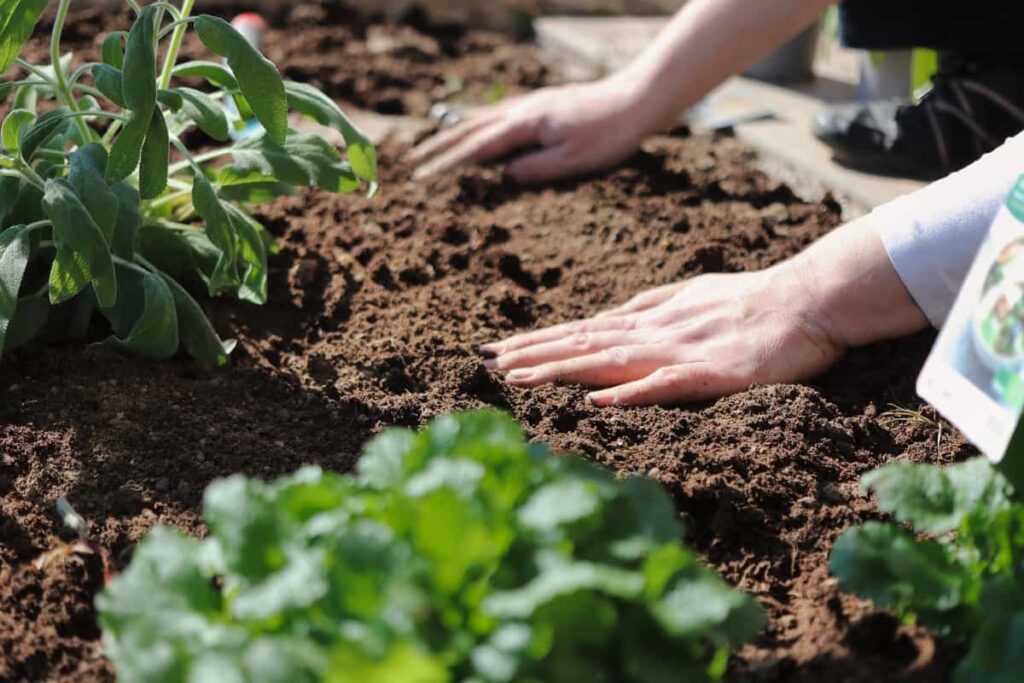
This table helps you prepare your soil for planting in the spring in Zone 9:
| Soil Type | Amendments Needed | Preparation Steps | Regional Notes | Best Vegetables for Soil Type | Tips for Success |
|---|---|---|---|---|---|
| Sandy Soil | Compost, Aged Manure | Loosen soil deeply; add mulch | Common in Phoenix, Arizona; drains quickly. | Carrots, Radishes, Melons | Water frequently to prevent drying out. |
| Clay Soil | Gypsum, Compost | Break up clods; add organic matter | Found in parts of Texas, Florida; retains water. | Kale, Broccoli, Swiss Chard | Avoid overwatering to prevent root rot. |
| Loamy Soil | Compost, Lime (if acidic) | Test pH; amend as needed | Found in coastal areas like San Jose, CA. | Tomatoes, Peppers, Beans | Mulch to retain moisture and suppress weeds. |
| Saline Soil | Gypsum, Organic Matter | Flush with water; add amendments | Found in desert areas like Tucson, AZ. | Okra, Eggplant, Sweet Potatoes | Avoid over-fertilizing to prevent salt buildup. |
| Rocky Soil | Remove rocks; Add compost | Loosen soil; add organic matter | Found in parts of Texas, Florida; poor drainage. | Beets, Turnips, Parsnips | Use raised beds for better root growth. |
15. Fall Vegetable Gardening in Zone 9: What to Plant After Summer Crops Finish
Fall vegetable gardening is an excellent method for extending the growing season in Zone 9, particularly in regions such as San Diego (California) and Orlando (Florida), where mild winters make it possible to cultivate cool-season crops for longer periods of time. It is possible that crops planted in inland places such as Sacramento (California) and Austin (Texas) will require protection against frost on occasion. When you plan early, you may assure that you will have a plentiful harvest of cruciferous crops, root vegetables, and leafy greens in the fall.
The following is a table on cultivating vegetables in Zone 9 during the fall:
| Vegetable | Planting Time (9a/9b) | Days to Harvest | Frost Tolerance | Watering Needs | Tips for Success | Companion Plants |
|---|---|---|---|---|---|---|
| Lettuce | September – November (All Zones) | 40-50 | High | Moderate | Use row covers in cooler zones. | Radishes, Chives |
| Kale | September – November (All Zones) | 50-60 | Very High | Moderate | Mulch to retain moisture. | Nasturtiums, Marigolds. |
| Carrots | September – October (All Zones) | 60-75 | High | Light | Loosen soil deeply before planting. | Leeks, Onions. |
| Broccoli | August – September (All Zones) | 70-90 | High | Moderate | Protect from late frosts in Zone 9a. | Dill, Chamomile. |
| Spinach | October – December (All Zones) | 40-50 | Very High | Light | Plant in clusters for shared warmth. | Strawberries, Radishes. |
| Beets | September – October (All Zones) | 50-60 | High | Moderate | Thin seedlings to avoid overcrowding. | Garlic, Mint. |
| Swiss Chard | September – November (All Zones) | 50-60 | High | Moderate | Harvest outer leaves first to extend growth. | Beans. |
Conclusion
Considering the lengthened growing season and great weather conditions, Zone 9 is an excellent location for vegetable cultivation because it provides a perfect habitat. Through the use of this planting guide, you will be able to confidently choose the appropriate crops, plan the timing of your plantings, and use the most effective gardening methods in order to cultivate a profitable garden. It is important to keep in mind that patience, observation, and adaptability are necessary for effective gardening because nature frequently has surprises in store for us. You will be well-equipped to enjoy fresh, homegrown products while making the most of what Zone 9 has to offer and will be able to do so with commitment and the insights that are presented here at your disposal. Happy gardening to you!


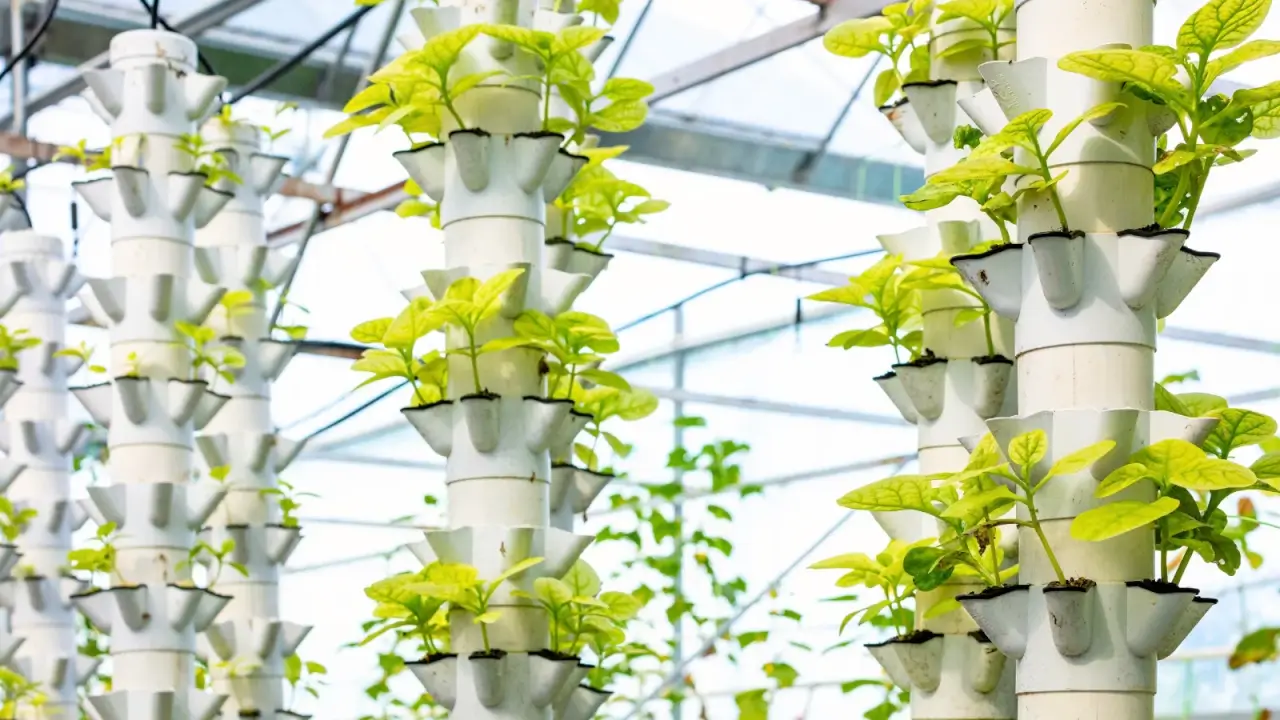
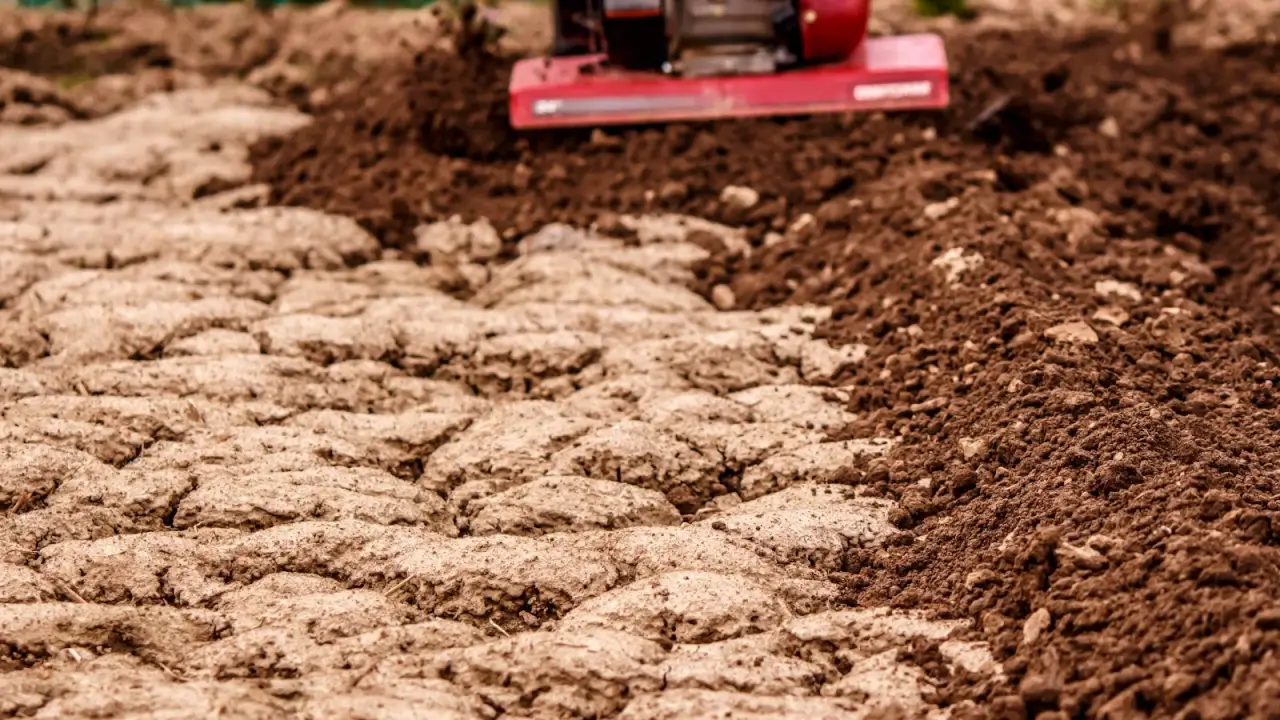











Leave a Reply